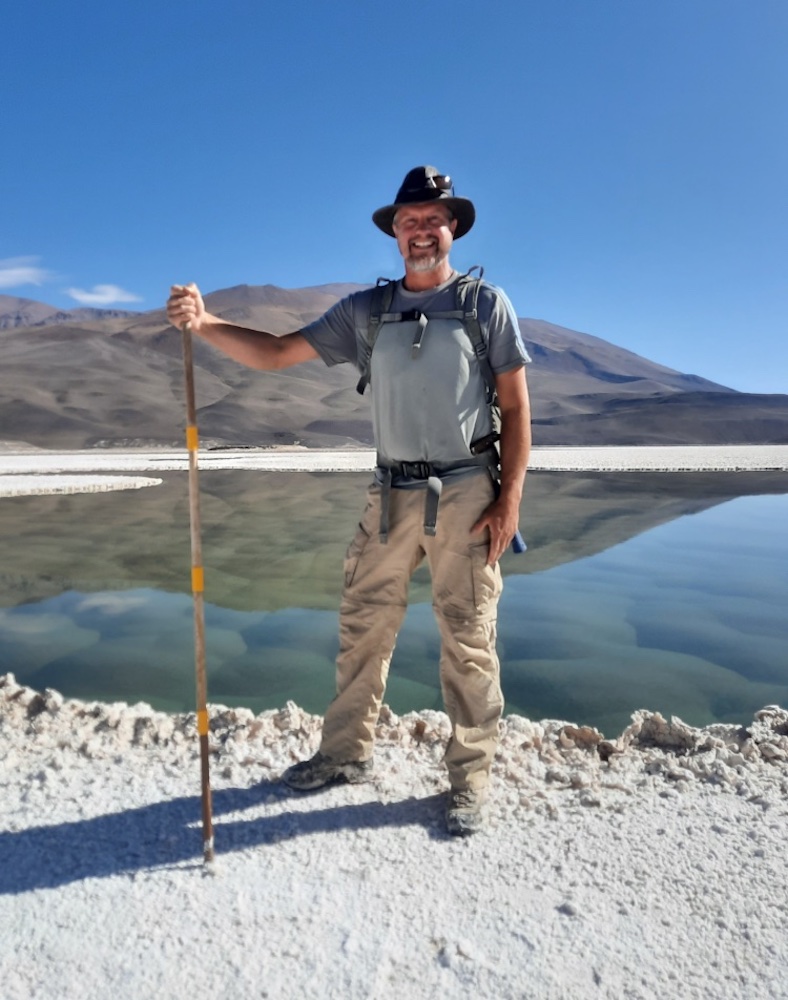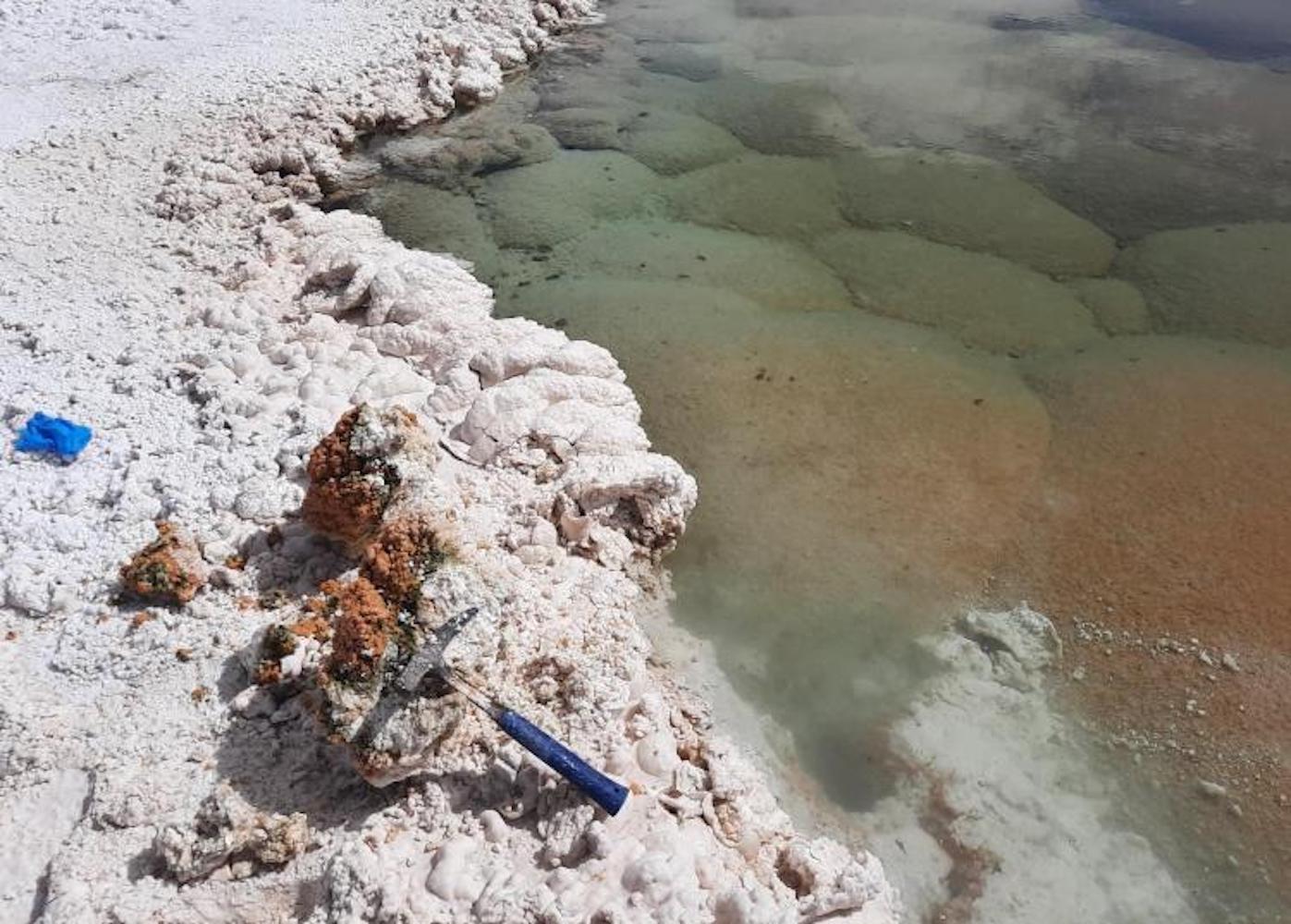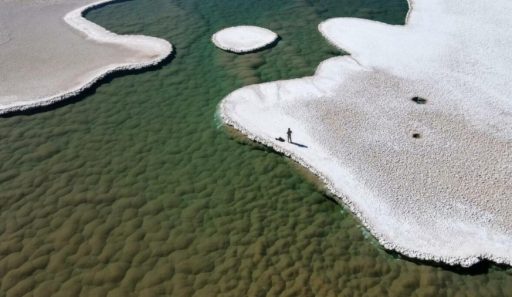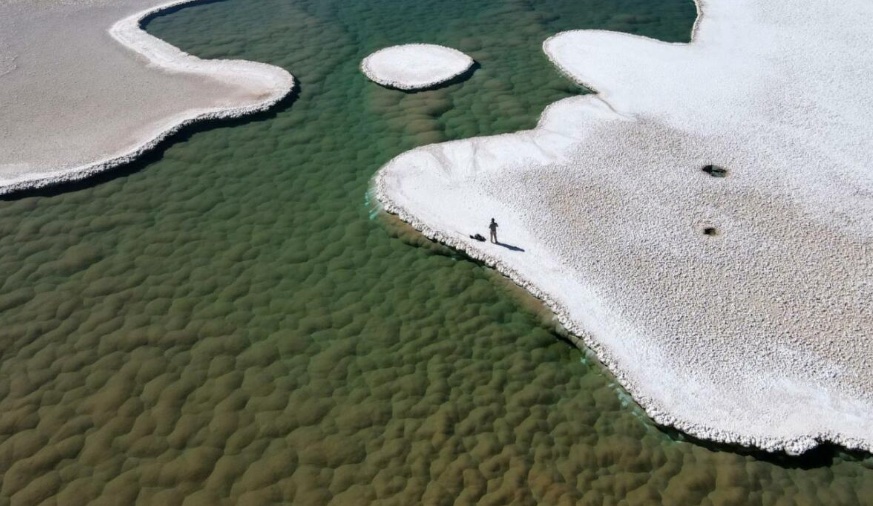Scientists have uncovered what might be one of the earliest life forms on Earth, hidden within a remote chain of lagoons.
These shallow bodies of water are situated on a high plateau over 12,000 feet above sea level, encircled by salt flats.
The region experiences infrequent rainfall.
The team has identified the presence of stromatolites in these lagoons.

Stromatolites are layered rock-like structures composed of calcareous materials and sediment, created by abundant cyanobacteria.
These formations are believed to date back to the dawn of Earth’s history, approximately 3.5 billion years ago.
Geologist Brian Hynek remarked: “This could represent one of the finest modern examples of the earliest indicators of life on Earth.”
This remote location spans 25 acres on Argentina’s Atacama Plateau, close to the border of Chile and Bolivia.

Mr. Hynek, a faculty member at the University of Colorado Boulder, USA, expressed his amazement at discovering such uncharted phenomena on Earth.
He discovered stromatolites that were around 15 feet in diameter, resembling huge green hillocks.
While modern stromatolites exist, they are generally smaller than their ancient equivalents.
Hynek believes the Atacama Plateau’s harsh environment mirrors the primitive conditions of ancient Earth, with its salty, acidic lagoon waters subjected to intense solar radiation.
This significant discovery may aid the search for extraterrestrial life, particularly on Mars.

Professor Hynek stated: “Studying these current communities on Earth could guide us in identifying similar formations in Martian geology.”
He, along with co-researcher Maria Farías, a microbiologist, plans to conduct more experiments at the site before lithium mining commences in the area.
Disclaimers:
This content and images have been licensed to use by Jam Press, edited and syndicated by https://www.znewsservice.com/.
Should you have any questions relating to this content please get in touch with Jam Press via https://www.jampress.co.uk/contact-us/







